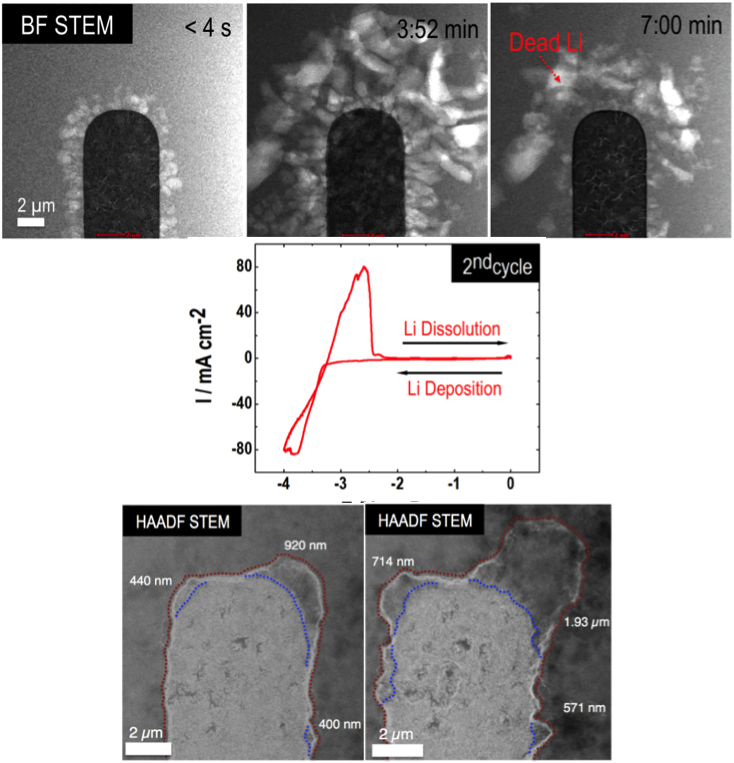
(Center) Simultaneous cyclic voltammetry of the second Li deposition/dissolution cycle.
(Bottom) Evolution of the anode surface roughness (blue line) and dendrite growth beneath the ~200nm thick SEI layer (red line) after extended cycling
Scientific Achievement
- Implemented “battery in a STEM” – an operando electrochemical stage inside an Cs-corrected scanning transmission electron microscope (STEM)
- Quantified the dynamics of the Solid-Electrolyte Interphase (SEI) layer formation, evolution of anode surface roughness and dendrite nucleation – key features defining the performance and failure modes of next generation Li batteries
Significance and Impact
- First observation of surface reactions and morphology evolution at an anode surface under operating conditions with nanoscale resolution
- Operando stage allows rapid visualization and testing of a wide range of next generation electrode/electrolyte combinations
Research Details
- Mass/thickness contrast uniquely identifies Li from other components in the battery
- Electric field simulation identifies the locations of electrochemical activity
- Pt working electrode in an electrolyte of LiPF6 in propylene carbonate (PC)
Work performed at Pacific Northwest National Laboratory (JCESR partner), Florida State University, UC Davis and Penn State by BL Mehdi, J Qian, E Nasybulin, H Mehta, WA Henderson, W Xu, CM Wang, JE Evans, J Liu, JG Zhang, KT Mueller, ND Browning, C Park, DA Welch, R Faller and KT Mueller, Nano Letters, 2015.

